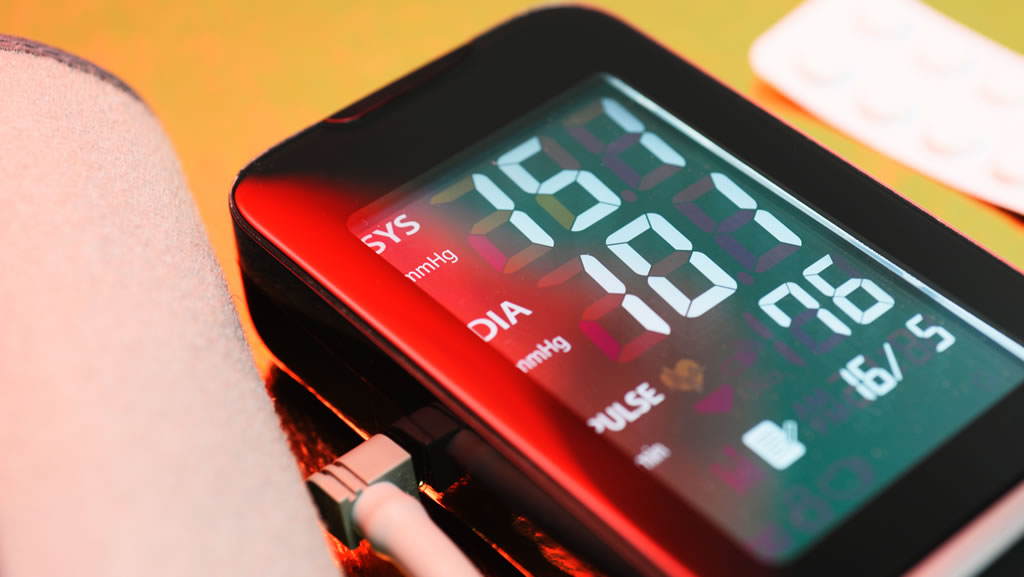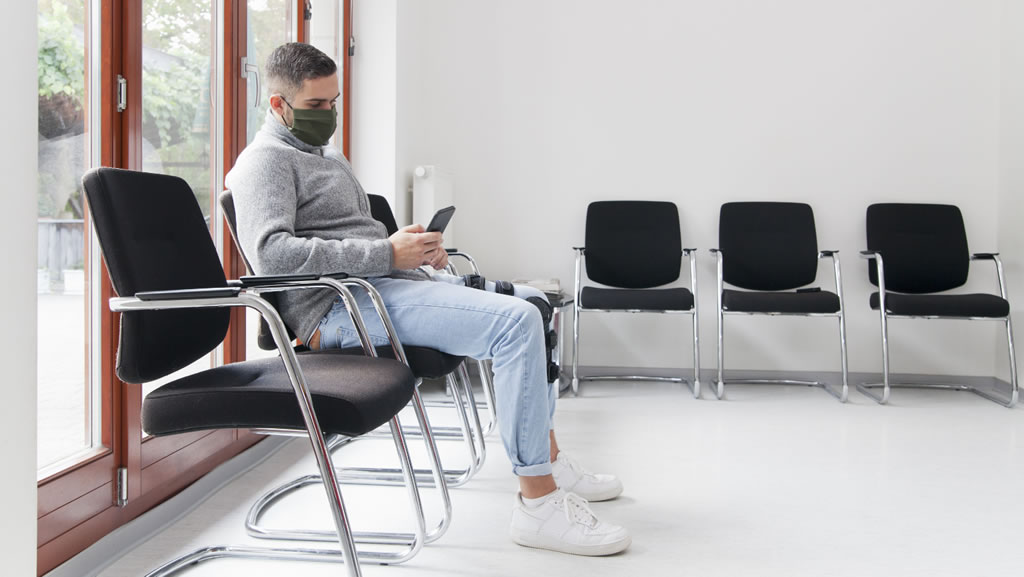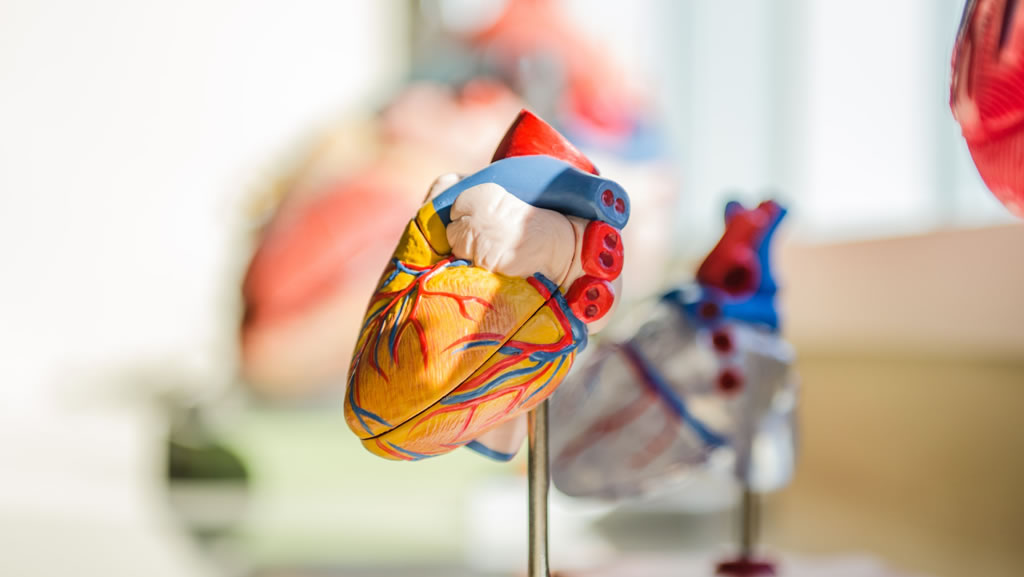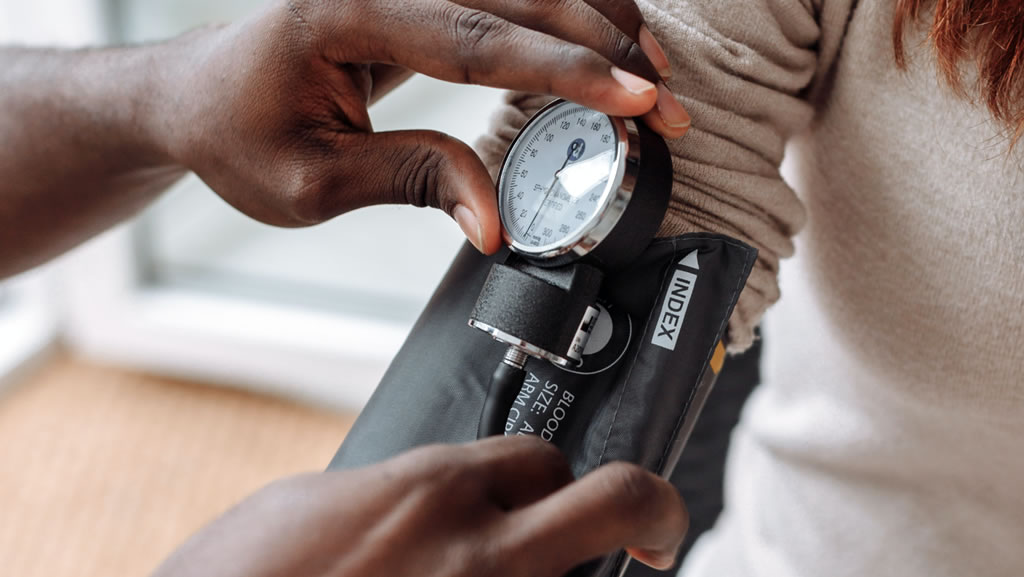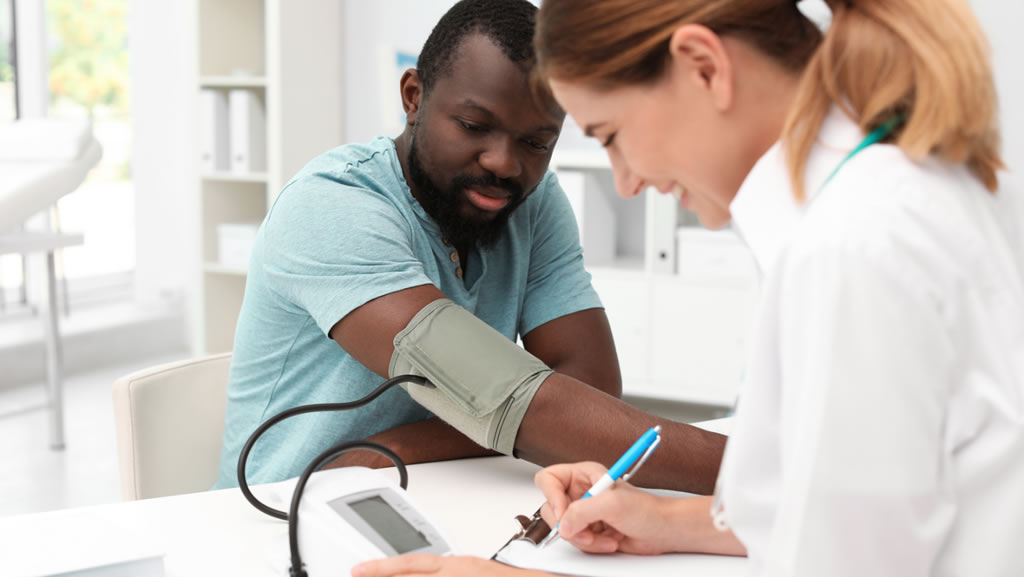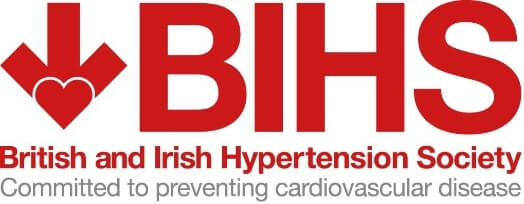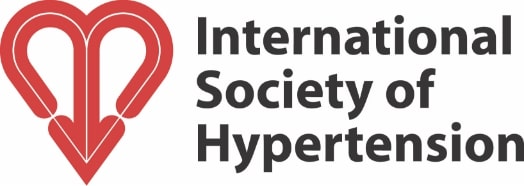
Your blood pressure is one of the most important functions of your body. It’s responsible for carrying blood to and from your heart, so it needs to remain consistent.
While most young adults are lucky enough to have a cardiovascular system which manages their needs quite well, it’s not uncommon for a poor diet or other factors to cause levels to rise. In this guide, we’ll look at how you can best manage your blood pressure, as well as what medical advice and support is offered to anyone suffering.
Having high blood pressure isn’t comfortable, but neither is it uncommon. Let’s take a closer look at how the numbers tally up for people with hypertension across the world.
Hypertension is the official name given to the condition of high blood pressure. If this is something you’ve been recently diagnosed with, don’t worry – you’re definitely not alone.
In fact, it’s estimated as many as 24% of people in the UK experience some kind of high blood pressure – that’s almost 1 in 4 people. And this number is rising all the time. The latest survey report taken by the NHS highlighted this, with figures showing:
The report also found that it was men aged 55-64 who let hypertension go untreated. Nearly 21% of those with the condition did nothing to combat it, while only 13% of women in that range let their high blood pressure go unchecked.
That said, things are a lot better than where we were at the turn of the century. Back in 2003, 29% of women and 32% of all men in the UK were diagnosed. While they’re somewhat similar numbers to the latest findings, they do at least imply an effective control and management of the situation.
And that’s good news for the NHS. It’s estimated that it costs them as much as £2bn a year to care for patients with high blood pressure. Worryingly though, reports also suggest as many as 5.5 million people in the UK may be living with an undiagnosed form of the condition.
Blood Pressure UK go on to highlight some of the key statistics surrounding hypertension and its effect on people across the UK:
While numbers will always continue to fluctuate, the prevalence of hypertension across the UK is a factor which will never completely go away.
The coronavirus pandemic has had a huge impact on everyone’s health. And when it comes to a condition like hypertension, that could play a factor in how you’re able to manage your blood pressure.
Sadly, having a condition like hypertension does lead to an increased risk of dying from COVID-19 – although in more positive news, it is less prevalent than a number of other common underlying health conditions. The BBC reported on the number of people who died with health problems in the first Wuhan wave of the virus, finding:
WebMD would go on to highlight the risk factors for hypertension sufferers further, stating that between 30-50% of all patients hospitalised in China and the USA had high blood pressure. In Italy, as many as 76% of people who died of the virus had hypertension.
If you’re someone who’s worried about managing your blood pressure while balancing the risks of COVID-19, you’re not alone. Here are some handy steps to keep in mind for anyone who’s struggling:
At the outbreak of the pandemic, reports claimed that medications like ACE inhibitors and ARBs increased the risk of contracting COVID-19. These suggestions were later proven to be false, with some studies even finding they may be protective.
It’s vital if you’ve been prescribed any dosage of medication for hypertension that you continue to take it. Failing to do so can put a huge strain on your physical health. Always talk to a doctor about any news stories you hear relating to medication usage and COVID-19.
Make sure to follow all government-sanctioned guidelines and regulations. If you feel uncomfortable leaving the house, it’s recommended you shield yourself. This might require you finding someone to take care of tasks like shopping for you.
Even if you’re experiencing issues which aren’t related to COVID-19, don’t be afraid to reach out to your GP or specialist. It’s noble to feel like you don’t want to waste their time with non-coronavirus issues, but your health is still important. If you notice anything amiss, get in touch.
If you’re someone who regularly checks their own blood pressure, don’t stop now. It’s potentially more important than ever to make sure your numbers are in check.
We’re still finding out a lot about COVID-19 and its impact on the human body. It won’t be clear how much of an impact certain conditions had on infection, mortality and recovering rates until the disease is completely under control. For now, it’s best to do everything you can to protect yourself and lower the chances of infection.
Young people in particular may not really think about the long term damage a condition like hypertension can have on the body. It’s easy to pass it off as something to worry about later down the line, but many of your vital organs can be damaged if the condition is left untreated.
As the vessel through which your blood travels, it’s perhaps no surprise the excess strain can cause issues like coronary artery disease, an enlarged heart and even heart failure if left untreated. The last of these is particularly troubling if you’re younger, as the heart muscle will weaken over a longer period of time than in an older person who develops hypertension.

Your brain needs a constant and internally regulated flow of blood to work at full capacity. Hypertension can easily disrupt this, causing arteries to weaken or blood clots to form. In extreme cases, this can result in cognitive impairments, early onset dementia and even strokes.

If the blood vessels which are attached to your kidneys become damaged, these organs will have a much harder time removing any excess fluid from your blood. This can result in scarring of the kidneys (glomerulosclerosis) as well as total failure over time.

If the small blood vessels connected to your eyes become damaged, it can result in conditions like retinopathy (damage of the retina), choroidopathy (fluid build-up) and optic neuropathy (damage to the optic nerve itself).
There are also immediate dangers hypertension can pose. Again, the younger you are, the less likely you think these things are to happen to you. in reality, any of the following can be triggered by cases of severely high blood pressure:
With the potential for damage to happen to your body, it’s important to identify and manage your condition as quickly as possible.
While it might not be something you’ve ever really considered before, it could be that your blood pressure has been slowly rising over time without you noticing. Hypertension is practically symptomless, making it very hard to spot.
Thankfully, there are steps you can take on your own to both identify and manage your blood pressure from home, without the need for medical assistance.
The best way to know how to avoid high blood pressure is to familiarise yourself with the primary causes and risk factors. While some of these will be medical conditions beyond your control, others are day-to-day habits which can easily be cut out.

Pre-existing conditions like sleep apnea, kidney, adrenal and thyroid disease are all major contributors to a rise in blood pressure levels. These will be harder to manage, but it’s not impossible.

This is a far more controllable factor in most cases. The more you weigh, the more blood is required to be pumped throughout your body. And with a rise in blood itself, the force felt on your arteries will also increase. This leads directly to an increase in pressure.

While one cigarette or glass of wine won’t cause anything chronic, the continued regular consumption of alcohol and tobacco will often lead to a heightened chance of developing hypertension. This is particularly true for men.

Although it is out of your control, educating yourself about your family’s history with high blood pressure can let you know if it’s something you need to keep an eye on. Being prepared for the condition later in life is a good way to battle it.

Sodium and potassium are key nutrients for finding a healthy balance in the pressure of your blood. Reducing salt intake and having a diet with enough potassium may help to bring down your blood pressure.
Once you understand what you’re looking for, it’s simpler to know what steps are best to take to reduce the risks of hypertension becoming a factor in your life.
You’ll be pleased to know there are lots of ways a young adult can lower their own blood pressure. Most involve relatively basic lifestyle choices, which over time will completely transform your blood levels. Some of the best methods for combating hypertension include:
Becoming active on a regular basis can help to lower your blood pressure by as much as 4-9mmHg on average. Something like 150 minutes a week (just over 20 minutes a day) can be incredibly beneficial. Some of the most common types of exercise which can help include the likes of jogging, cycling, walking, swimming and dancing.
Wholesale dietary changes can play a huge part in bringing your blood pressure under control. Possibly the simplest fix is reducing the amount of salt (sodium) you’re consuming. This is easily enough done, you just need to:
It’s also worth noting you probably shouldn’t cut out all salt overnight. This needs to be a change you ease yourself into, or else your body might react poorly to the sudden change in sodium levels.
Caffeine (most commonly found in drinks like coffee and energy drinks) isn’t always linked to hypertension, but it can aggravate your condition if you’re a chronic sufferer. Cut back on any drinks which are high in the stimulant.
Stress is a contributing factor to spikes in your blood pressure. Only by working on your mental health can you begin to reduce the impact that this hidden trigger can have on your body. Try to identify the root of your stressful thoughts, while also working on practices which alleviate any symptoms – for example, meditation.
Arguably the most important factor for lowering hypertension is managing what you eat and drink. As the fuel for our body, the food we consume plays a major role in factors like blood pressure. We’ve already looked at tackling the dangers of excess sodium, but there are other steps for anyone concerned about their blood pressure.
If you want to lower yours, think about working the following changes into your culinary routine:

Potassium is a great source of nutrition because of the impact it has on salt in the body. The nutrient will not only help to rid you of any excess sodium, but also relaxes your blood vessels in the process. Healthy foods like bananas, spinach, oranges and broccoli are all packed full of potassium.

DASH stands for “Dietary Approaches to Stop Hypertension”. It’s a vegetable, fruit and low-dairy focused diet, which provides a number of health benefits aside from just lowering your blood pressure. You can find a templated diet and work off of it, making it easy to follow and stick to.

A similar, albeit slightly different approach is the Mediterranean diet. With this one, you’re encouraged to eat fruits, vegetables, nuts, fish and olive oil, with far fewer meats and cheeses. Refined bread is also cut out.

Foods with limited nutritional value (such as crisps, sweets, chocolate and any form of alcohol) can all heighten our blood pressure. Cutting back, or even totally eliminating these altogether, will have a big impact on the chances of developing hypertension, as well as the effectiveness of managing it.
Naturally, it won’t be an overnight fix. Your dietary changes will begin to take effect over time. And the earlier in life you start to think about managing your blood pressure levels, the more effective the changes to what you eat will be further down the line.
If you’re concerned about hypertension, don’t feel like you have to manage it all by yourself. As a relatively common condition, medical advancements have made it relatively easy to manage and control. In this chapter we’re going to look at getting clinical help for your high blood pressure.
If you’re really struggling to bring your blood pressure down on your own, you’ll be pleased to know there are a variety of prescriptions which help people to manage hypertension. This will vary depending on age. The main types of medication offered are similar, but subtly different.
There are two kinds of medication most commonly prescribed to the majority of people aged below 55 suffering from hypertension. They are:
ACE inhibitors work in much the same way as potassium, relaxing your blood vessels to reduce pressure. They're relatively common among younger sufferers, but can sometimes lead to a dry cough, headaches, dizziness and a rash.
ARBs will often be given to those who are struggling to deal with the side effects of ACE inhibitors. As such, they work in much the same way, and also carry a small (lessened) risk of experiencing side effects.
There are two kinds of medication most commonly prescribed to the majority of people aged below 55 suffering from hypertension. They are:
This form of medication will reduce your blood pressure by opening your blood vessels wider, allowing for easier flow. Headaches, swollen ankles and constipation are sometimes associated with this form of medication, which can be heightened if you drink grapefruit juice while taking them.
Often referred to as water pills’, this easily digestible form of medication will expel excess salt from your body by causing you to urinate more often. They can lead to an increased thirst, as well as low sodium and potassium levels if they start working too efficiently.
These blockers will make your heart beat slower, reducing the force of your blood. Beta blockers are often used as a last resort, owing to the fact they’re seen as less effective than other forms of hypertension medication.
Make sure you’re getting the right kind of medication for your needs. And always be sure to talk to your doctor if you’re worried the side effects are getting worse.
If you’re someone who struggles with any kind of heart condition, you may want to ensure you’re getting regularly checked up for hypertension and other blood-related issues.
A blood pressure test itself is a relatively straight-forward procedure, often lasting just a few minutes. As such, it’s something you should probably consider getting done relatively regularly.
The test is carried out in the following way:
Your arm is held out at the same level of your heart, with a monitoring cuff placed around it (the arm should be placed in a relaxing position, supported by something)
The cuff is pumped up tightly to restrict the flow of blood to your arm
The pressure is slowly released, while a stethoscope or digital sensor is used to listen to your pulse
The pressure will be recorded at two different points as the cuff deflates, which is then used to give a blood pressure reading
If you want a more detailed analysis of your blood pressure, you can contact a private cardiologist about a 24-hour blood pressuring monitoring. This test sees you wear a device allowing you to go about your day normally.
At the conclusion of the 24-hour period you are given your results, highlighting if there’s any cause for concern.
If you’re a little nervous about getting a test done, don’t worry. Lots of people have this kind of treatment every day, which means there probably aren’t a lot of scenarios nurses and doctors haven’t seen before. When it comes to your appointment, make sure to keep the following in mind:
For the half hour to an hour before your test, don’t do any exercise, or drink any caffeine or alcohol. These are all triggers for increasing your heart rate, which in turn will cause your blood pressure to rise to higher than average levels. It can affect the results of your test.
This makes it far easier for the cuff to fit properly around your arm, which in turn guarantees your readings will be a lot more accurate. The cuff ideally needs to be making direct contact with your skin.
Take five minutes before your test to relax yourself as much as possible. You’ll want to make sure your readings are as accurate as they can be. The best way to do that is by assessing your pressure levels when you are at your most relaxed.
If you’re already taking any other kinds of medication, make sure to mention it to the doctor or nurse who’s carrying out your test. This is something they’re likely to ask anyway, but it’s always good to keep this in mind in the unlikely case they don’t.
Ultimately, you’ll want to make sure your body is primed to make your test as accurate as possible.
This can be easier said than done, especially if you’re someone who gets easily nervous around medical staff and hospitals. This isn’t something to feel embarrassed about. In fact, it’s common enough to be given its own name – White Coat Syndrome (WCS).
WCS has been shown to have a direct impact on your blood pressure readings, with some studies even suggesting as many as 15-30% of diagnosed hypertension cases were as a result of unusually heightened stress in the doctor’s office.
If you think you might be someone who is affected by WCS, try the following to help manage your anxiety:
It’s best to be open and upfront with your doctor about how you’re feeling. It won’t be the first time someone has been nervous around them, and it definitely won’t be the last. They’ll do their best to calm you down.
If you find yourself getting stressed in a crowded waiting area, try to find somewhere a little out of the way to relax and help lower your heart rate. Talk to the receptionist if there doesn’t appear to be anywhere for you to remove yourself from a situation, or tell them you’re waiting outside.
Sitting around waiting for your name to be called isn’t just boring if you have WCS. It can also let tension and worry build-up. Bring something along with you to help keep your mind off your appointment. Something like a book or a puzzle will work great.
There are a number of deep-breathing exercises and other stress-relief techniques which you can use to help manage your nerves. These can be used in other day-to-day activities which might be stressful.
You may already have questions relating to the condition of hypertension. If there’s something more you want to find out from your doctor, make sure to have them prepared ahead of time. Some good examples of questions you might want to ask include:

If you’re worried that your size might be having an impact on your blood pressure, it’s worth asking your doctor what your weight or BMI should be.

As we’ve seen, there are a number of diets which work well for hypertension. Your doctor should be able to tell you which is best suited for you. Let them know any dietary requirements or allergies you have.

Tell your physician how much exercise you’re doing, then work out if you need to be doing more (or less). This can have a huge impact on your blood pressure levels. Even half an hour a day will drastically improve your condition.

Make sure to have a very clear plan for when and how frequently you should be taking your medication. Also find out if you’re able to take it on an empty stomach, or if you should consume it with food.
If any other questions come up in the moment, don’t be afraid to ask. It’s important you know as much as possible about what you need to do, as well as your next steps.
If you feel confident enough doing it, you can test your own blood pressure from the comfort of your home. This can be a better option for young adults, who are less likely to have hypertension.
It can also be a good option if, by contrast, you’re someone who regularly needs to check their blood pressure levels. Either way, the process is surprisingly simple – in fact, it’s the same as when you go to the doctor’s office.
Make sure to ask your GP what kind of equipment you’re going to need, and then follow the same steps you would do when visiting a practice. When it comes to understanding the readings on your monitor, remember that blood pressure is measured by two key metrics:
Each of these will be represented by how many millimetres of mercury (mmHg) can be found in each. The reading will always be given with the systolic pressure first, followed by the diastolic.
When it comes to what you should be looking for as a representation of normal blood pressure levels, the NHS state anything between 90/60mmHg (90 systolic and 60 diastolic) to 120/80mmHg is a healthy range.
If you’re wondering what kind of readings would represent a more troubling number, they go on to say:
For those anywhere between 120/80mmHg and 140/90mmHg, you’re in the risk bracket. While you aren’t technically suffering from hypertension, now would be a good time to start thinking about a change in diet or lifestyle habits.
Wearable devices are another great way to easily stay on top of your blood pressure at all times. These are worn on your wrist, like a watch would be . They use your pulse to keep track of pressure levels, alerting you if they get too high or drop too low.
Some of the main benefits to these types of wearable devices include:
A wearable device gives you access to data on a 24/7 basis, no matter where you are or what you’re doing. That means finding the time to check your blood pressure is easier.
With data which monitors what you’re doing throughout the day, it’s much easier to pinpoint what habits cause a spike to your blood pressure. Using this information, it’s much easier to work out what you might need to cut out from your diet, or changes to your routine which you could try.
Some wearable devices don’t only measure your pulse, they actually inflate to take precise and accurate readings, like a professional testing kit. While you might have to pay a bit more for this luxury, it saves you the hassle of having to find and store a kit.
Pregnancy can be a nervy time for young mothers. Hypertension is quite common amongst mums-to-be, with many different types of the condition posing a potential risk:
This type of hypertension tends to develop roughly 20 weeks into a pregnancy. While this type of blood pressure change isn’t too worrying in and of itself, it can sometimes lead to more serious forms of the condition.
By contrast, this often occurs in the first 20 weeks of a pregnancy. While the name sounds scary, the condition can be easily managed if caught early enough.
This condition is a little more serious, and has the potential to lead to life-threatening damage for both mother and baby further down the line. Pregnant women who develop preeclampsia often experience organ failure. This condition isn’t common, but it’s one to keep in mind.
Signs that you might be developing more serious forms of hypertension, such as preeclampsia, include:
While hypertension is a condition which can be managed quite easily at most times, the added complication of pregnancy poses a number of concerns which the average person wouldn’t have to worry about:
This can cause a baby to receive less nutrients, as well as a lack of oxygen. This can result in slow growth, a low birth weight or even a premature birth.
This is where the placenta separates itself from the inner wall of a uterus before it’s born. This has the potential to cause heavy internal bleeding. This is a danger to both a mother and her baby.
Having a condition like preeclampsia increases your chance of developing another cardiovascular disease in the future. This is particularly the case if you were forced to have a premature birth.
Your brain, lungs, kidney, heart and a number of other important organs are all at risk of damage when you develop any kind of hypertension when pregnant.
While this might all sound a bit scary, there are ways to manage the condition and reduce the risk of any complications during the pregnancy and birth.
Make sure to get regular checks, whether through a wearable device, or with your doctor. If you’re monitoring it at home, make sure to keep a detailed record of what they say and check in with your doctor. This can be referred back to work out if levels or rising or dipping when they shouldn’t be.
Pregnant mums may get cravings for odd snacks, but it’s important to make sure you are keeping your diet under control. Talk to your doctor or a nutritionist if you need clear instructions on how to do this properly.
It’s obvious that things like alcohol, smoking and any non-prescribed drugs are off-limits. But make sure to ask your GP if there are any other regular habits of yours that you need to avoid.
If you have scheduled appointments, it’s really important you don’t miss any (or reschedule them quickly if you do). Even if it feels like there hasn’t been much change in your condition, hypertension can sometimes go unnoticed.
In most instances hypertension will gradually go away after your baby is born. If your blood pressure doesn’t return to normal, your doctor may provide you with medication to continue taking.
Owing to the ease with which hypertension can be managed, it’s a condition which can often go overlooked by others in your day-to-day life. If you’re struggling to manage your condition mentally, there are steps you can take to make things that little bit easier.
Those close to you will always take the time to listen and understand what’s troubling you. While it might be hard opening up about something you could feel sensitive about, here are some of the best ways to approach this delicate subject:
You know your loved ones better than anyone. Some need one-to-one chats about your condition, while others might benefit from hearing it as part of a group. This can be decided on a person-by-person basis. Make a list of everyone you want to talk to beforehand, then sort them into the group or solo category.
Make every aspect of your condition (the symptoms, long term health risks etc.) as clear as possible. Even if that means sitting down and showing them detailed research, it’s going to be beneficial for them. An easy solution is to sit and do a Google search while you’re going over everything.
Make it clear that you’re willing and open to talk about the condition (you shouldn’t be sharing it with people you don’t feel comfortable chatting to about it). Encourage any questions they might have in the moment, then be sure to check again a little down the line to see if any new queries have popped into their heads which they might be shy to ask.
Be sure to let those close to you know that they can be as upfront about their thoughts as possible. Openness from both of you is the key to really understanding how to move forward.
While it’s a condition which has a direct impact on your physical health, there are a series of other factors you’ll need to consider when being diagnosed with hypertension.
These are particularly important to keep in mind as a young adult, as they’re not questions you’ll be asked or considerations made unless you specify your condition.
If you’re looking to take out an insurance policy for something like your life, your car or even a holiday, you will probably be asked to mention any underlying health conditions. While hypertension won’t make your premiums skyrocket, they might make them more expensive than for other people of your age.
Managing a condition like hypertension is likely to put additional stress on mind and wellbeing. A medical condition is troubling at the best of times, but if it’s something you have to manage alongside an otherwise active and healthy lifestyle, it could make it even harder.
You won’t need to inform the DVLA to drive a car or motorcycle if you have hypertension, but you will need to if you’re planning to drive for a career (for example as a bus driver, lorry driver or a cabbie).
What’s more, there are also a number of organisations who exist purely to help people who are suffering from hypertension. Make sure to get in contact with any of the following groups if you feel like you need additional support for your condition.
This charity's aim is to help people with hypertension to both manage and even lower blood pressure levels. Their primary goal is to make knowing your pressure levels as common as your height and weight, having helped up to 16 million people with hypertension since 2000.
This is where the placenta separates itself from the inner wall of a uterus before it’s born. This has the potential to cause heavy internal bleeding. This is a danger to both a mother and her baby.
This centre for all things hypertension-related provides visitors with the chance to explore useful resources, as well as find courses related to hypertension management and understanding.
Arguably the most important place to turn if you’re ever unsure or concerned about your health is your own doctor. Your GP will be able to provide quick and actionable advice, as well as pointing you in the right direction if your condition now requires more support.
We've covered a lot in this guide. But if you’re a young adult who still has questions about the effect of hypertension, or what you can do to manage it, be sure to browse this list of secondary sources.
The Government look at what you can do to combat any issues caused by hypertension
NICE look at some of the best recommendations for anyone who experiences regular hypertension
WebMD cover some of the more frequently asked questions relating to hypertension
The World Health Organization take a closer look at hypertension statistics from around the globe
